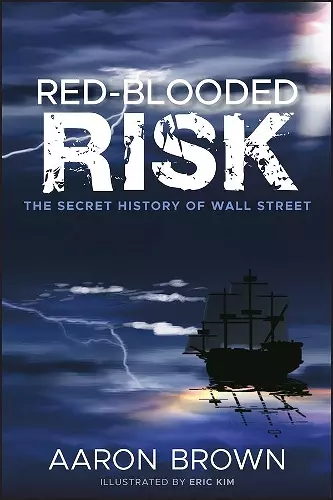Red-Blooded Risk
The Secret History of Wall Street
Format:Hardback
Publisher:John Wiley & Sons Inc
Published:11th Nov '11
Should be back in stock very soon

This insightful guide explores how successful financial risk-takers leverage innovative strategies. Red-Blooded Risk offers practical advice for navigating uncertainty.
In Red-Blooded Risk, author Aaron Brown delves into the world of financial risk-taking, revealing the unique strategies that set the most successful risk-takers apart from the rest. Drawing on his experiences on Wall Street from 1987 to 1992, Brown highlights how a select group of quants pioneered innovative risk management techniques aimed at maximizing success. This guide emphasizes that the essence of thriving in uncertain environments lies in understanding and managing true risk, rather than merely avoiding it.
Brown argues against the prevailing belief that minimizing risk is the key to success, asserting instead that calculated risk-taking can lead to significant rewards. With practical, actionable strategies, Red-Blooded Risk equips readers with the tools necessary to navigate dynamic markets confidently. The book is grounded in a rich historical context, offering insights into the evolution of risk management and its implications for various fields beyond finance.
Additionally, the narrative is enhanced by the artistic contributions of renowned manga artist Eric Kim, making complex concepts more accessible. Readers will find not only a rigorous exploration of risk but also a compelling story that challenges conventional wisdom. By embracing the right risks, individuals can unlock profitable opportunities that might otherwise remain hidden, encouraging a mindset shift that values strategic risk-taking as a pathway to success.
"Wickedly original, one of the most fascinating accounts I have ever seen. A rollicking and highly opinionated read." (Risk Professional, October 2011)
“No one who reads Red-Blooded Risk: The Secret History of Wall Street will ever again regard risk management as a necessary but unproductive appendage of the financial industry. Other authors have chronicled how quantitative finance influenced investment management, but Aaron Brown has made a compelling case for a far more profound economic impact. . . If Red-Blooded Risk: The Secret History of Wall Street dealt with nothing more than the inadequacy of models used in highly important activities, it would represent a valuable contribution to financial economics. Brown’s book, however, covers a great deal more than econometric malpractice. Probably no other book offers as much insight into the process with so little resort to mathematical notation. Especially valuable are Brown’s discussions of middle-office risk management and value at risk, comparatively recent innovations that are essential to understanding modern financial institutions. Readers of Red-Blooded Risk should be prepared to have many of their assumptions challenged. Red-Blooded Risk is one of the most original and thought-provoking books reviewed in these pages in the past 20 years. No one who reads it will ever again regard risk management as a necessary but unproductive appendage of the financial industry. Other authors have chronicled how quantitative finance influenced investment management, but Aaron Brown has made a compelling case for a far more profound economic impact.”
—Martin S. Fridson, CFA Institute Publications Book Reviews
“Red-Blooded Risk mixes risk history and philosophy nimbly and provides a perspective that can be both refreshing and challenging (often on the same page). While the book is not without weaknesses, it is also brimming with original perspectives and controversial opinions. Those who work in risk management or quantitative finance will enjoy Brown’s story-telling and expert perspectives, even if they do not share his views, while non-quants will find his insights and confessions to be a useful glimpse into the psyche and ethos of an influential group of early quantitative risk takers.
—Roger M. Stein, Research and Academic Relations, Moody’s Corporation, as reviewed in Quantitative Finance (August 6, 2012)
ISBN: 9781118043868
Dimensions: 230mm x 160mm x 38mm
Weight: 1043g
432 pages